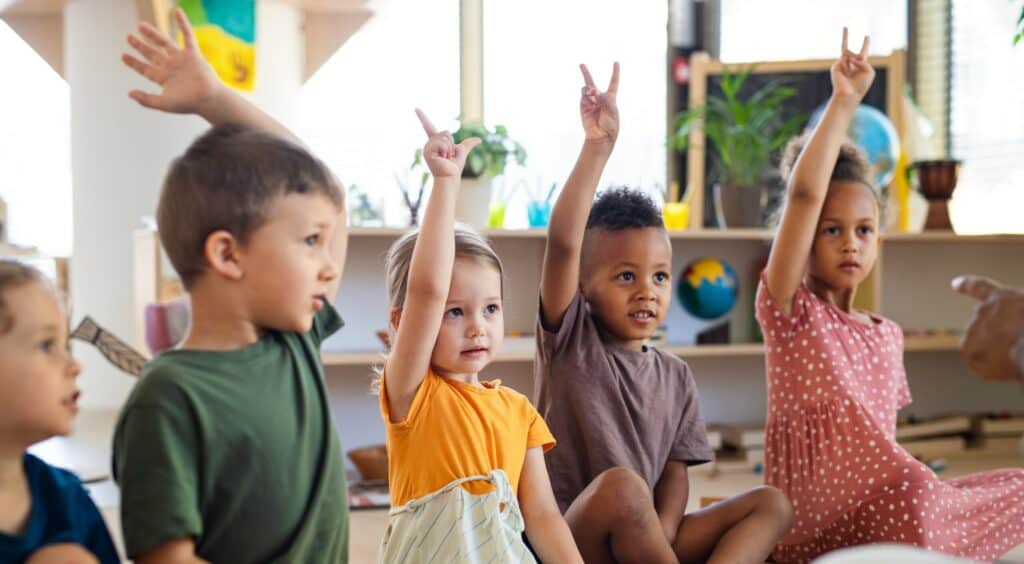Key Highlights
- Discover good ways to teach kindness to preschoolers.
- Learn easy tips to add acts of kindness to everyday activities.
- Explore how role-playing and praise can help teach empathy.
- Find out how crafts and stories can encourage generosity and compassion.
- Understand why teaching kindness early is important for a better future.
- Get answers to common questions about promoting acts of kindness in young kids.
Introduction
In a world where kindness and compassion matter, teaching young children about acts of kindness is a special gift. When we show preschoolers how to be kind, they become more aware of their feelings and the feelings of others. This helps make the world a better place for everyone. As teachers and parents, we have an important part to play. We can help shape young children into caring individuals. This gives them the power to make the world brighter and more understanding.
Understanding Kindness in Preschoolers

Preschoolers are naturally curious and are starting to develop their social skills. They are ready to begin learning about kindness. At this young age, they learn from what they see around them. They copy how adults and older kids act.
To help our little ones, including toddlers, learn about kindness, we need to understand where they are in their development. They may not yet understand empathy and compassion well, but they can grasp simple acts of kindness. This is where we can help them. We can gently encourage them to think about how others feel and help them show care and consideration.
Defining Kindness for Young Minds
To explain kindness to a preschooler, use simple words and ideas they can relate to. Don't confuse them with complex definitions. Instead, show them how being kind can help others.
Encourage them to notice feelings in themselves and their friends. If they see a friend who is sad, ask them, "How would you feel if that happened to you?" This helps them understand how other people feel and builds compassion.
Always celebrate their kind actions. If they share their toys or help a friend, say something like, "That was so kind of you to share your toys with Liam! Look how happy he is now." This praise helps them see that being kind is good and makes them want to keep doing it.
The Importance of Teaching Kindness Early
Teaching kindness to young kids is very important for a few reasons. During their early years, they build the basis for their social and emotional skills. When we show them what kindness is, we give them the tools they need to understand and relate better with other people.
Also, when we encourage kindness in young kids, we help them become active members of a caring and positive community in a million different ways. When they see how their actions affect others, they are more likely to take these lessons to heart and keep them as they grow up. This not only helps them personally, but it also inspires others to be kind.
It’s important to remember that teaching kindness is not just a one-time thing. It’s a process that keeps happening. Small, consistent actions can make a big difference. By including acts of kindness in their daily lives, we can help kids see compassion as a way of living. Every act of kindness, even a tiny one, is a step towards a better future.
Practical Strategies to Foster Kindness

Let's look at some easy ways to teach kindness to preschoolers. Kids learn better when they play and watch others. So, putting kindness into their daily activities will help more than just talking to them about it.
You can add acts of kindness to what you do every day and do the right thing. Make it fun and exciting for them. Use storytelling, role-playing, and praise to share the ideas of empathy and compassion effectively.
Role-Playing Scenarios to Teach Empathy
Role-playing gives kids a safe place to try out different social situations and see things from other people's views. By acting out real-life events, they learn to understand how others feel and respond with empathy.
Use simple, relatable situations like:
- A friend feels left out on the playground.
- Someone spills their juice by mistake.
- A classmate is worried about giving a presentation.
Encourage kids to make eye contact, use kind words, and offer help in these role-playing games. This helps them learn the value of non-verbal cues and build emotional intelligence in social settings.
Encouraging Words and Actions of Kindness
Words have great power. Teach kids to use kind words like "thank you," "please," "excuse me," and "you're welcome" in their daily language. These simple phrases, when used honestly, can make someone’s day better and create a good mood.
Also, encourage them to do small but meaningful acts of kindness. This could be helping a friend clean up, sharing a snack, or giving a compliment. Remember, no act of kindness is too small.
Recognize and praise their efforts with real positive feedback. A simple "That was very thoughtful of you!" or a loving hug can really help encourage good behavior. Promoting gratitude is also important. Encourage them to say thanks for the kindness they get. This helps them understand and value acts of kindness even more.
Incorporating kindness board games into daily activities

Making kindness a part of everyday life helps a child grow with this value. It’s not just about planned lessons. Kindness should feel like a natural part of how they think and act.
We can add chances for kindness in different activities, like fun kindness board games and stories. This way, we create a space where compassion grows naturally. It turns regular moments into chances to show kindness in real life.
Craft Projects That Promote Kindness

Creative activities are a fun way to teach kindness. You can involve preschoolers in craft projects that focus on generosity and empathy. Here are some ideas:
- Make "Kindness Cards" where kids can write or draw nice messages for friends and family.
- Decorate a "Kindness Jar" and encourage everyone to add notes about acts of kindness they see or do.
- Work together to create a "Kindness Quilt," with each child decorating a square. They can use pictures or words that show what kindness means.
These projects help boost creativity and give a clear way for kids to understand kindness. They can express their thoughts in fun and colorful ways while joining in a group effort to celebrate this important value.
Kindness-Themed Books and Stories
Storytelling has been a powerful tool for teaching moral lessons for generations. Integrate kindness-themed books into their reading routine to showcase inspiring characters and heartwarming plots.
Conclusion
Teaching kindness to preschoolers helps build their character and how they interact with others. When we nurture empathy and encourage positive actions, we create a generation that cares about compassion. Role-playing, craft projects, and kind stories are fun ways to teach these values early. The kindness we teach preschoolers today will help them grow into a more compassionate society tomorrow. Let’s start teaching kindness today for a brighter future for our children and the world they will impact.
Frequently Asked Questions
How to explain kindness to a preschooler?
Use easy words and examples that little kids understand. For example, you can say, "Kindness is when you help Mommy clean up your toys." Or "Kindness is giving your friend a hug when they feel sad." These examples show a great way to teach them how being nice makes others happy.
What activities can help teach preschoolers about kindness?
- Get them involved in games that require sharing and helping each other, like taking turns on the playground.
- Encourage random acts of kindness, such as drawing pictures for elderly neighbors or giving away old toys.
Why is it important to teach kindness at a young age?
Teaching kindness to preschoolers is crucial as it lays the foundation for positive social interactions, empathy, and emotional intelligence. By instilling values of kindness early on, children learn to respect others, build strong relationships, and contribute to a more compassionate society as they grow.

